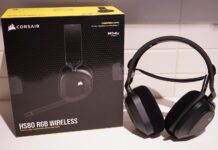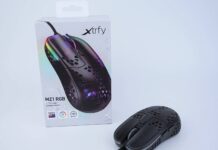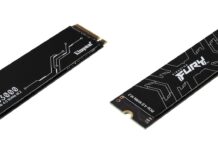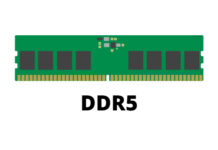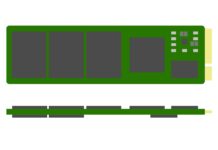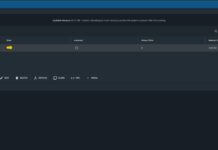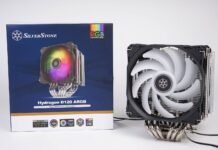
When Noctua released the latest flagship cooling fan, NF-A12x25, they moved the NF-P12 fans to the more budget-friendly redux lineup. In this review, we are taking a look at the new NF-P12 redux fans.
Specifications

Unboxing

The NF-P12 redux fans have a very similar package design to the chromax line. A simple hard cardboard box colored in the signature gray with brown accent on the sides. The packaging design is elegant, which should not be a surprise from Noctua.

The front of the box shows the model name of the fan, as well as stating the new frame design that allows the installation of anti-vibration rubber pads. On the back is the specification list of the fan, including fan speeds and rated performance.
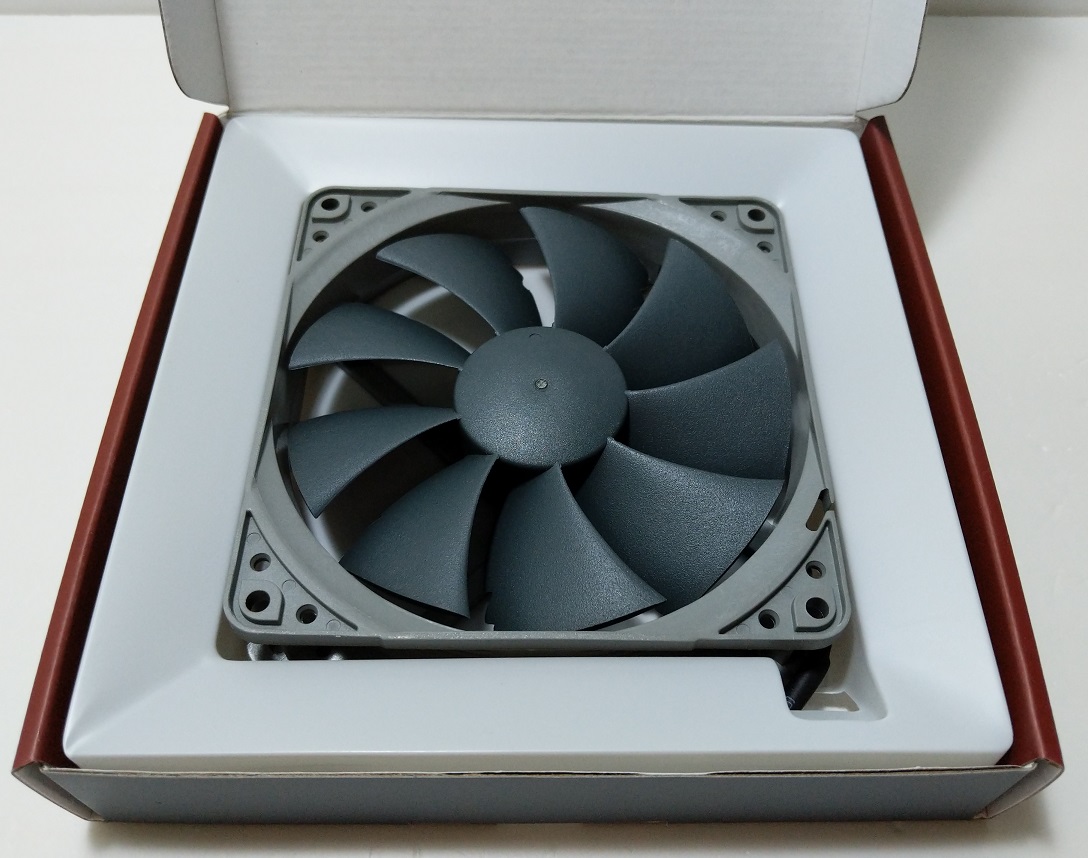
The NF-P12 redux fan is sitting in the center of the packaging, around a white plastic tray.

To reduce the cost of the redux line fans, Noctua has to cut down on the number of accessories included in the box. There is only a total of four standard fan screws for mounting the fan to a PC case.
Noctua NF-P12 redux Fans
There are four different models with different RPM ranges, from 900, 1300, to 1300 PWM and 1700 PWM. These new redux fans are designed based on the premium and notable NF-F12 fans.

The fiber-glass reinforced PBT fan frame is colored in light gray, while the nine pressure-optimized blades are in a darker shades of gray. A non-removable 40 cm 3-pin/4-pin PWM cable is attached to the motor hub in the middle.
Because of the lower retail prices of the redux line, the NF-P12 redux fans use the SSO bearing instead of the SSO2. The stepped inlet design, metal bearing outer shell and other more advanced technologies are not implemented either, to reduce the complexity and costs. Though, the fan remains to have the same MTBF of over 150,000 hours.
The vortex control notches at the end of each fan blades can help distributing noise over a wider frequency ranges, which makes the fan sounds quieter to humans’ ears. The internal custom-designed NE-FD1 PWM IC allows the fan to have smoother PWM switching.

The new addition to the NF-P12 redux fans is the support for Noctua’s own NA-SAVP1 anti-vibration pads, available in different chromax colors. You can also choose to purchase other optional accessories, depending on your needs. For example, you can buy a Low-Noise-Adaptor if you want the fan to spin at a lower speed.
Review
Testing Methodology
To determine the performance of the fan, we will measure both the airflow and CPU temperatures when using in heatsink.
An anemometer is used to record the fan’s airflow in various RPM ranges, including 25%, 50%, 75% and 100%. The results are measured in CFM (cubic feet per minute). The distance between the anemometer and the fan is kept at around 5 cm.
The fan is then installed on the air cooler. The CPU, FPU and system cache are stressed using AIDA64. Ambient temperature is around 25°C. The temperature of the CPU package is recorded at idle and full load when the fan is running at full speed.
- CPU: AMD Ryzen 5 1600X @ 3.6 GHz (95W TDP)
- Motherboard: MSI B350M GAMING PRO
- Air Cooler: Noctua NH-U12S (its review here)
Performance
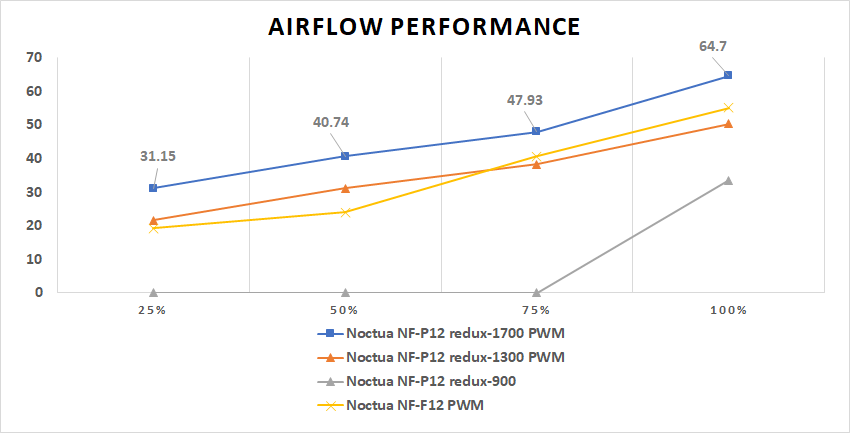
The NF-P12 redux fans did a pretty decent job in the airflow category. At 1300 RPM, the fan performed similarly as a more premium NF-F12 PWM at around 55 CFM. At the highest 1700 RPM, the NF-P12 redux could push a lot more air at about 64.7 CFM. While the airflow performance results did not match or exceed the advertised rating in our own testing, the differences were within 10% margin of error.

Using the NF-P12 redux in the Noctua NH-U12S cooler, we could see some impressive cooling performance. Again, the 1700 RPM model was on par with the default NF-F12 PWM, keeping the load temperature at 54°C. The only trade-off is the noticeably more noise because of the faster fan speed (1500 RPM vs 1700 RPM). More impressively, the NF-P12 redux-900 could even be able to hold the CPU load temperature under 60°C.
Conclusion

Despite now marketed as a more budget-friendly models, the Noctua NF-P12 redux fans do not disappoint in cooling performance. It did reasonably well in both our airflow and heasink performance tests. The addition of the NF-P12 redux fans makes the 120 mm redux line more comprehensive, because of the more pressure-optimized design.
The build quality of the redux fans is solid, just like any other Noctua fans. However, to reach similar performance of more premium models, the NF-P12 redux fans have to spin a bit faster, thus generating slightly more noise. It is not that noticeable, unless you are comparing them side-by-side.
Overall, the NF-P12 redux fans do not sacrifice any of the performance. You still get Noctua’s legendary 6-year warranty, and a rated MTBF of over 150,000 hours. You obviously do not have any included accessories, such as anti-vibration mounts and low-noise-adaptors. All variants of the NF-P12 redux are priced at $13.90 USD (MSRP), which is ideal for budget users to get their hands on the premium Noctua’s cooling fans without spending a fortune.
I would recommend you to purchase either of the 1300 PWM or 1700 PWM models. You can easily control it to run at lower speed using PWM control on motherboards, if necessary.
You can purchase the fans from your local/online resellers or the links below from Amazon.
- Noctua NF-P12 redux-900
- Noctua NF-P12 redux-1300
- Noctua NF-P12 redux-1300 PWM
- Noctua NF-P12 redux-1700 PWM
Thanks Noctua for providing us the NF-P12 redux fans for review. (Review Sample)
Feel free to leave comments below, if you have any opinion about this website. Share the website around if you enjoy reading it. Subscribe to our Newsletter or follow our Google+, Facebook and Twitter.
Support this website simply by shopping in Amazon. It will give us small kickbacks, if you use the above affiliate links to make any purchases, which will help us grow.



